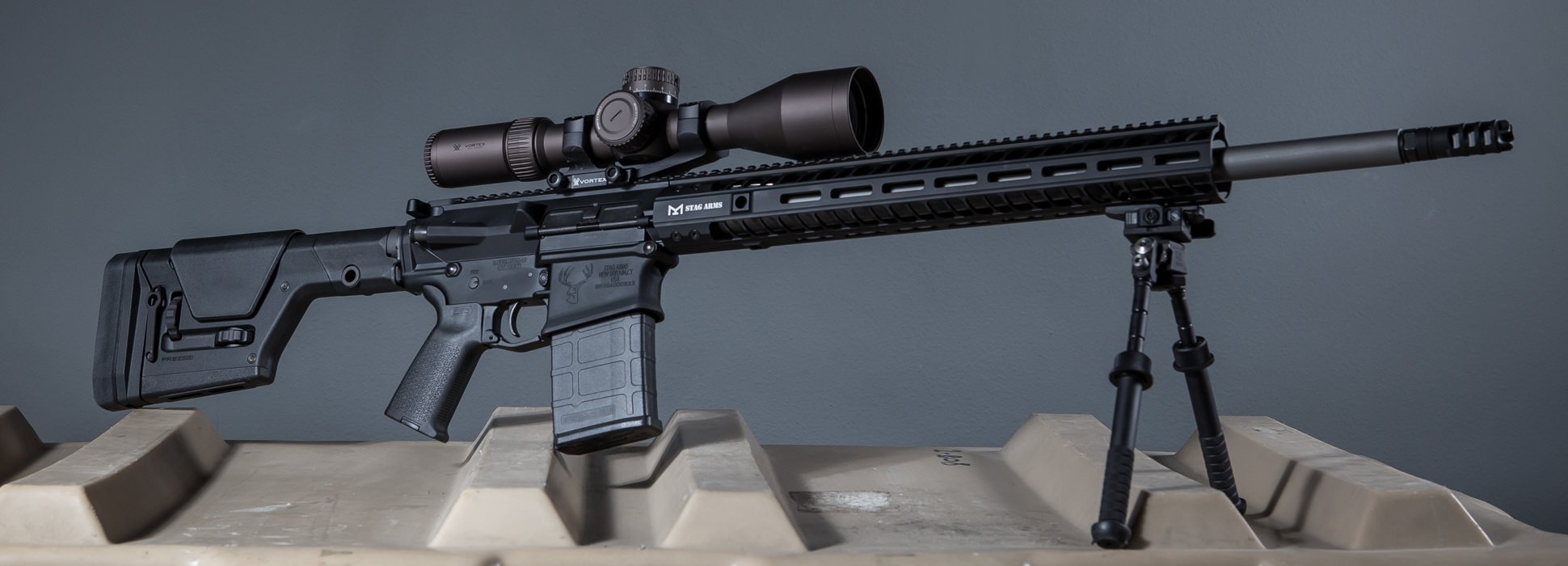 All modern day rifles have “lands,” which are the raised portions, and “grooves,” which are the valleys between the lands inside the barrel. These lands and grooves move down the barrel in a spiral fashion which is known as “rifling.”
All modern day rifles have “lands,” which are the raised portions, and “grooves,” which are the valleys between the lands inside the barrel. These lands and grooves move down the barrel in a spiral fashion which is known as “rifling.”
The rifling imparts a spin on the bullet as it travels down the barrel causing it to have a straighter trajectory after exiting. It’s the same reason a football quarterback puts a spin on the football when throwing it.
Rifling Measurement and Notation
Rifling is measured as a twist rate, the distance in inches it takes for the rifling to make one complete 360 degree revolution inside the barrel. When communicating the twist rate, it is denoted slightly differently when spoken versus when written as seen in the chart below.
Each twist rate in a 5.56/.223 barrel will stabilize a range of different bullet weights as seen in the chart below. It is safe to shoot bullets in weights outside the ranges specified for the twist rate. However they won’t stabilize as well when in flight, and therefore may not be as accurate.
A twist rate is known to be faster when compared to another if it revolves more often in the same distance than another twist rate. An example would be that a 1/7 twist rate is faster than a 1/9. Conversely, the 1/9 is a slower twist rate than the 1/7 because it takes a longer distance for a complete 360 degree revolution of the rifling.
Rifling In Relation To Bullets
The proper rifling required for a bullet is primarily dependent on the diameter and length of the projectile. Since the 5.56/.223 barrel is a constant diameter, it is the length of the projectile which determines the twist rates it will be stabilized with.
Due to the constant diameter inside the barrel and the fact that most bullets are manufactured with the same components, the best way to determine the proper twist rate is based on the weight of the bullet (measured in grains). The higher the weight, the longer the bullet, and the faster the twist rate.
| Twist rate | Spoken pronunciation | Written notation | Bullet weight stabilization |
| One revolution every 7 inches | “One in Seven” | 1/7 | 55-85 grains |
| One revolution every 8 inches | “One in Eight” | 1/8 | 50-80 grains |
| One revolution every 9 inches | “One in Nine” | 1/9 | 45-75 grains |
Image Courtesy of: spudtech.com



